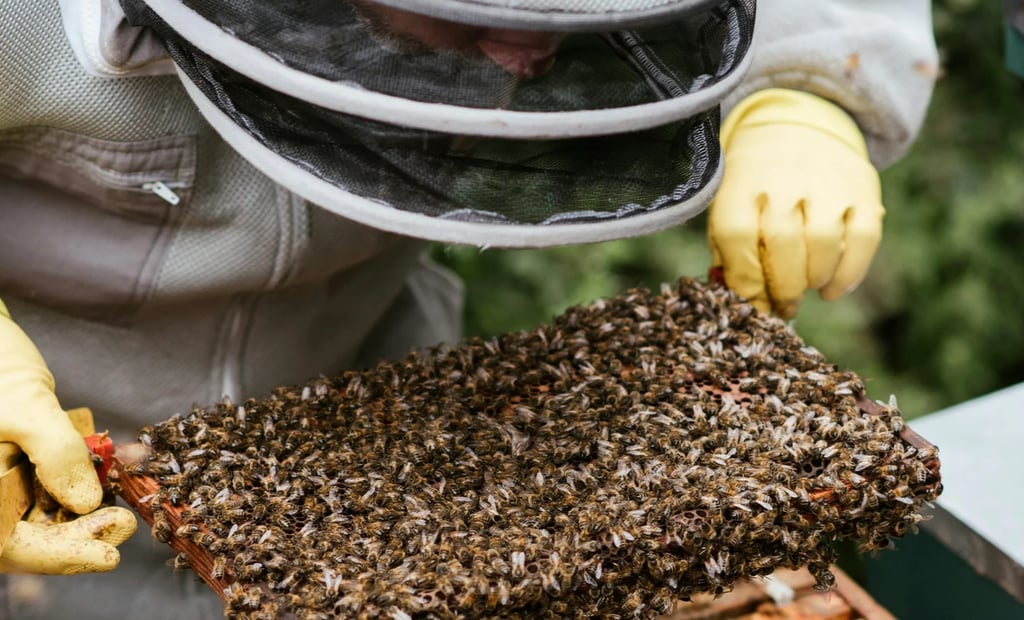From Hive to Jar: Honey Production, Extraction Methods, and Quality Control
The journey of honey from the hive to the jar is a delicate process rooted in biology, timing, and precision.


The journey of honey from the hive to the jar is a delicate process rooted in biology, timing, and precision. For beekeepers and commercial honey producers, mastering this journey ensures not only flavorful, high-quality honey but also strong, thriving colonies that continue to produce season after season.
Understanding Honey Production in the Hive
Honey bees collect nectar from flowering plants and convert it into honey through enzymatic activity and dehydration. Once the water content is reduced to around 18%, bees cap the cells with wax—signaling readiness for harvest.
Key insights:
Peak flow periods depend on region and climate.
Overharvesting can weaken colonies. Always leave enough stores for winter.
Different floral sources yield unique flavors, textures, and colors.
Using proper inspection gear like lightweight, breathable suits from Heliotrope Bee helps you assess when honey is fully cured and ready for extraction.
Best Practices for Honey Extraction
Extraction begins once frames are fully capped. Steps include:
Uncapping: Wax is removed with knives or rollers.
Spinning: Frames go into an extractor to separate honey via centrifugal force.
Filtering: Removes wax and particles without stripping flavor.
Bottling: Done in a clean, food-safe environment.
Heliotrope Bee recommends working in ventilated protective wear during uncapping and spinning to ensure safety and hygiene, especially when operating commercial-scale extractors.
Maintaining Hygiene and Preventing Contamination
Honey is hygroscopic and easily absorbs odors or moisture from the air. Quality control relies on:
Sanitized equipment: Prevents fermentation or off-flavors.
Dry environments: Keeps water content below fermentation threshold.
Temperature control: Warm rooms (30–35°C) speed extraction while preserving enzymes.
Heliotrope Bee’s suits are designed for breathable comfort during indoor extraction and processing activities, helping producers maintain cleanroom standards.
Quality Control and Product Testing
High-grade honey requires:
Moisture testing with refractometers.
Pollen analysis to confirm floral source and authenticity.
Color grading using the Pfund scale.
Crystallization control by managing storage temperature and seed ratios.
Producers should maintain logs and test batches regularly to ensure consistent quality. Premium markets—like export or medicinal-grade honey—demand traceability and lab validation.
Packaging, Branding, and Market Readiness
Once honey is extracted and tested, proper packaging preserves quality and communicates value:
Glass jars or food-grade plastic maintain freshness.
Labels should include origin, batch, floral source, and nutrition.
Tamper-evident seals boost customer confidence.
For beekeepers building a brand, consistency is key. Heliotrope Bee supports operations not just in the apiary but also through consultation on apparel for marketing events, exhibitions, and retail environments.
Gear That Moves From Hive to Harvest
From nectar gathering to final packaging, honey production is an intensive, hands-on process. Heliotrope Bee, trusted since 2012, equips beekeepers with protective apparel that supports every stage—fieldwork, harvesting, and processing. Durable, hygienic, and breathable, our suits, gloves, and jackets help ensure safe handling and top-tier honey.
Contact: sales@heliotropebee.com
Explore gear: www.heliotropebee.com


